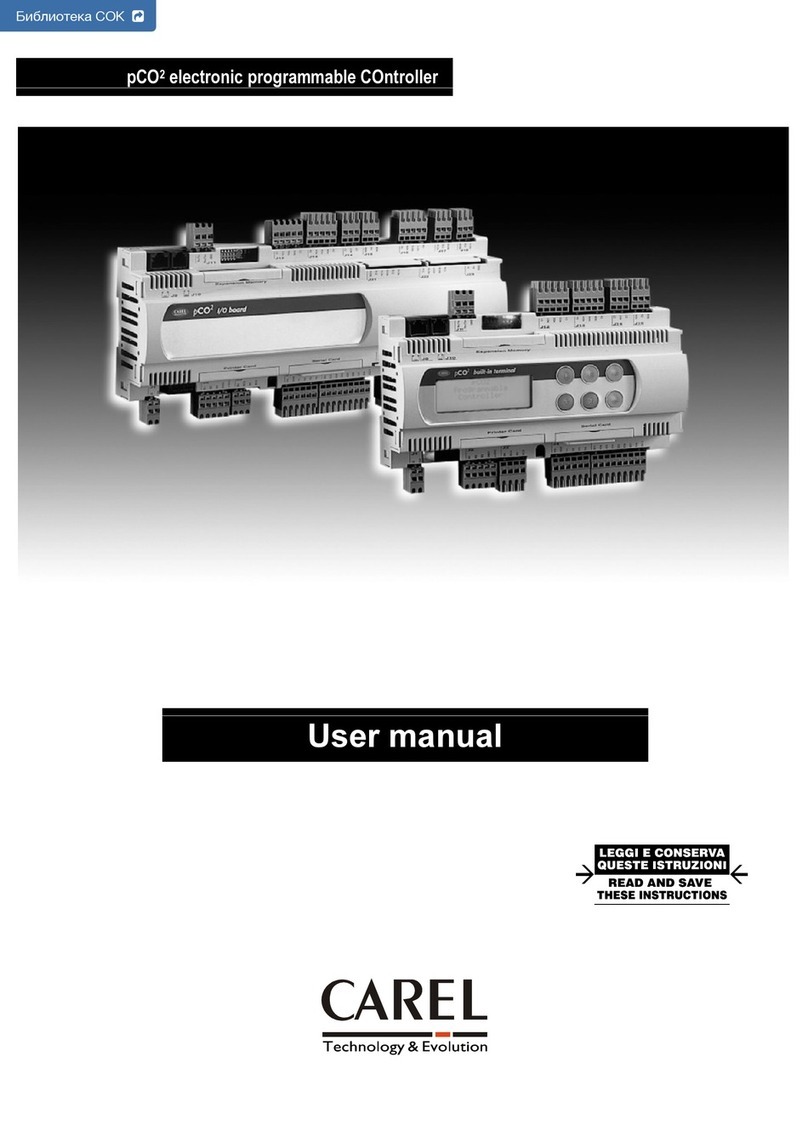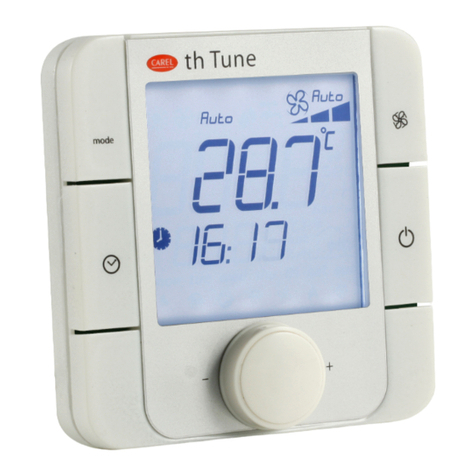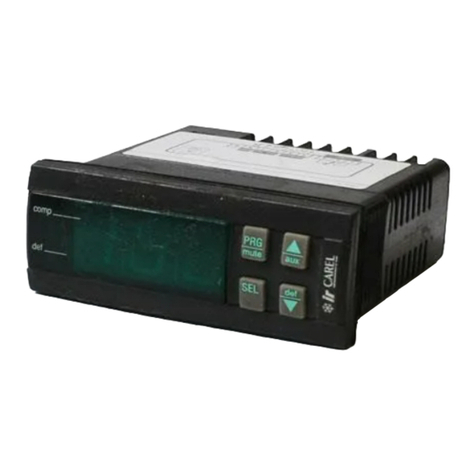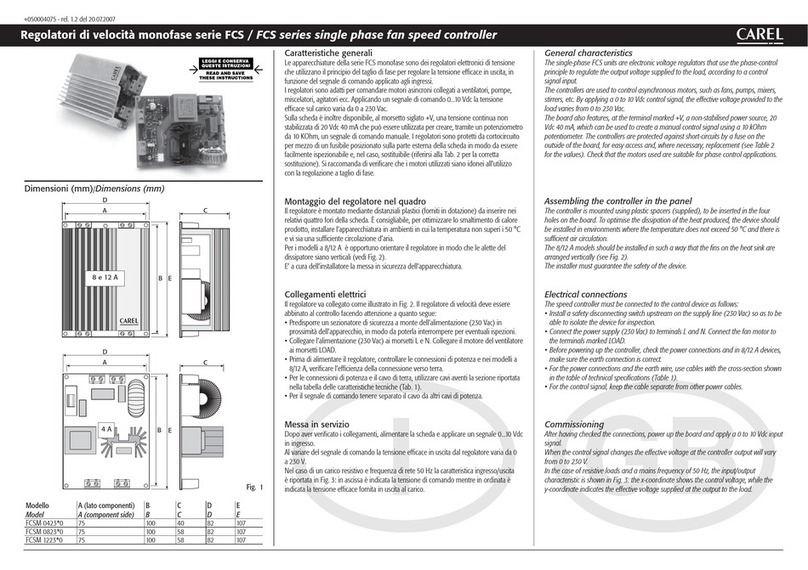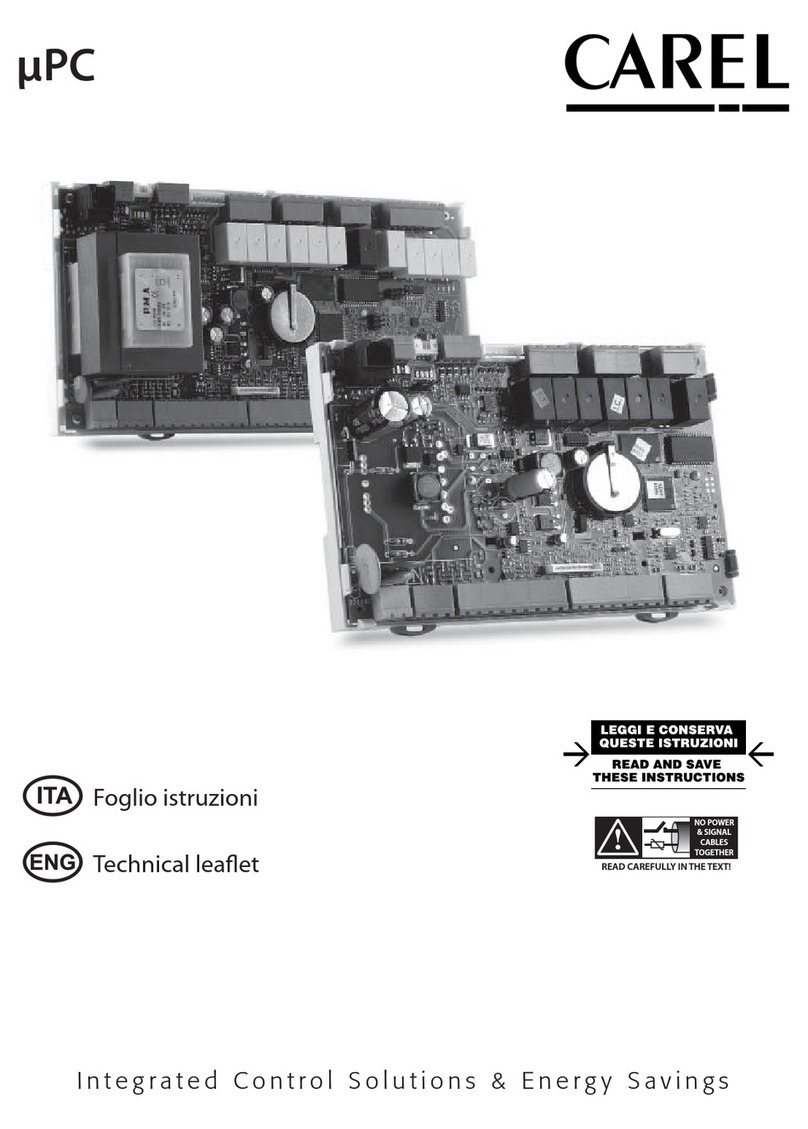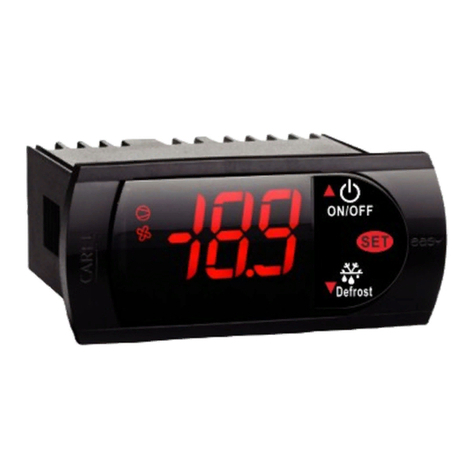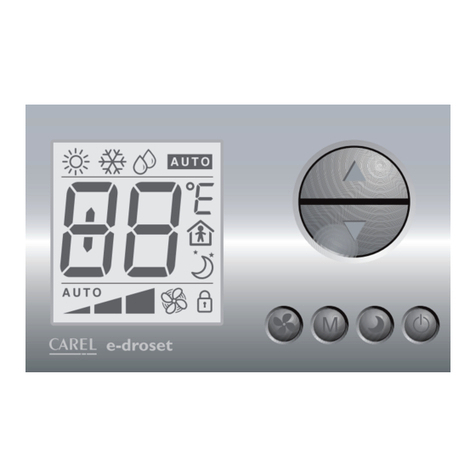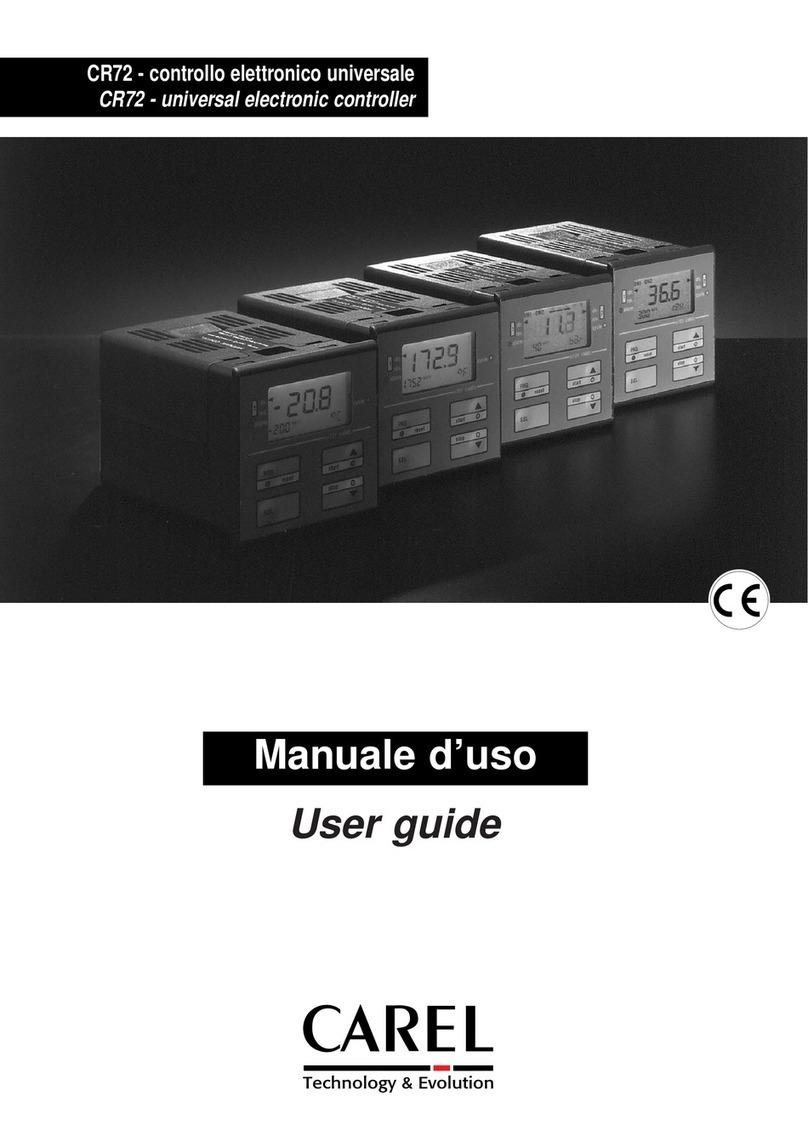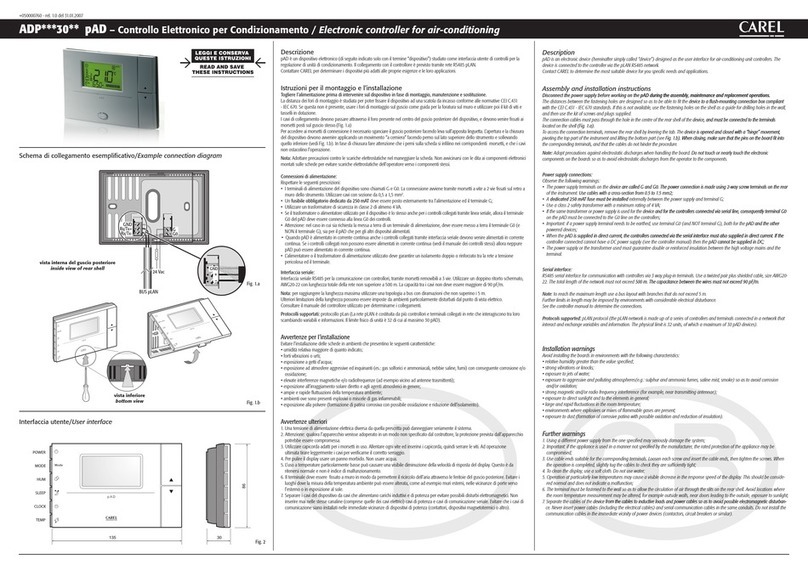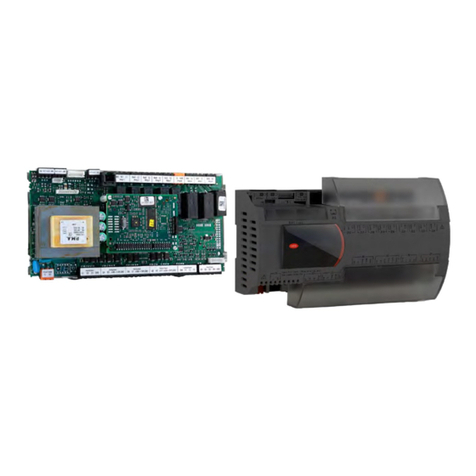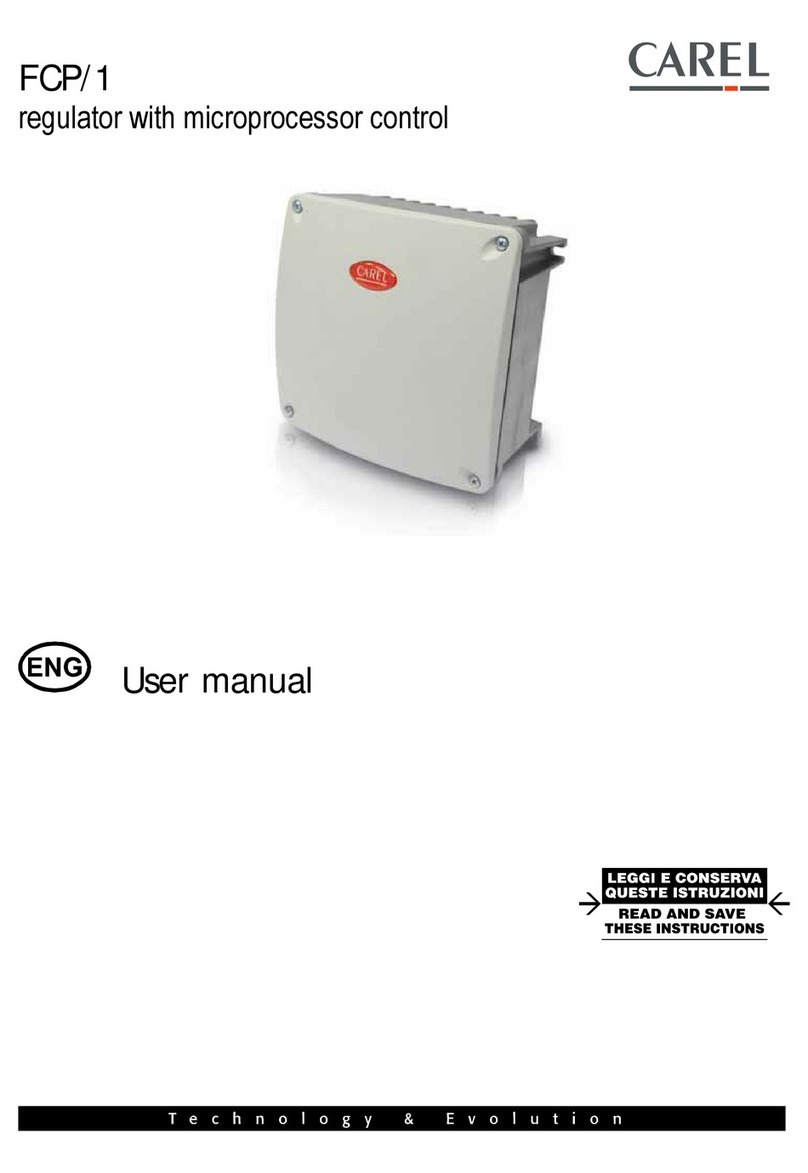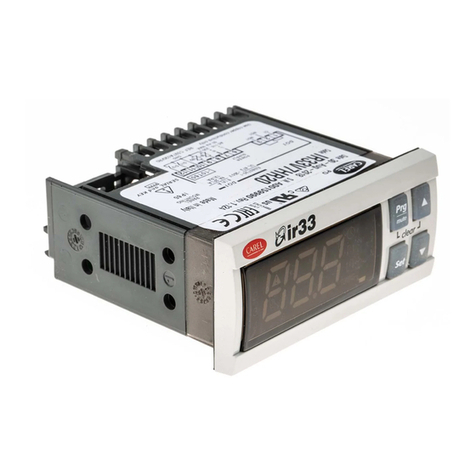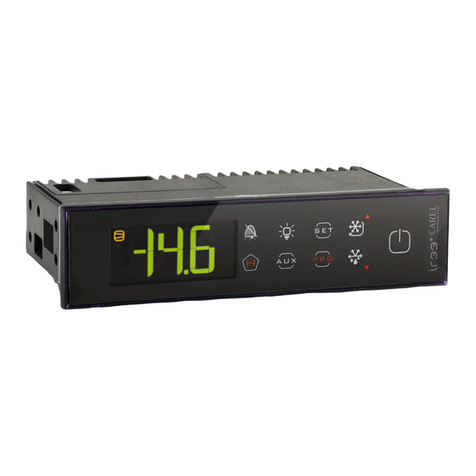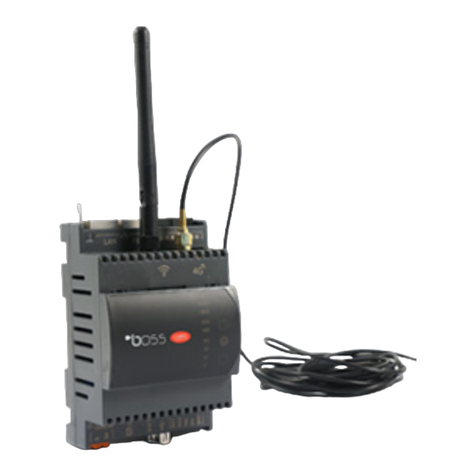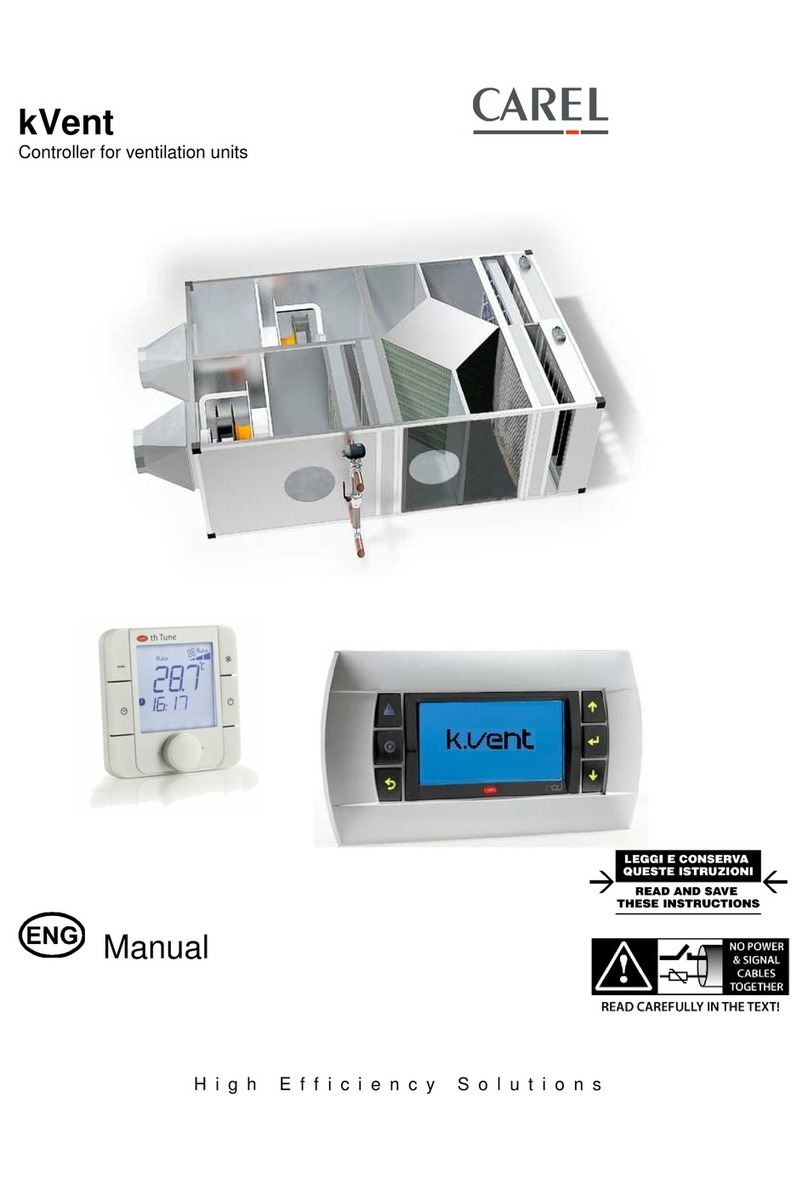
Regolatori di velocità monofase serie FCS / FCS series single phase fan speed controller
Caratteristiche generali
Le apparecchiature della serie FCS monofase sono dei regolatori elettronici di tensione
che utilizzano il principio del taglio di fase per regolare la tensione efficace in uscita, in
funzione del segnale di comando applicato agli ingressi.
I regolatori sono adatti per comandare motori asincroni collegati a ventilatori, pompe,
miscelatori, agitatori ecc. Applicando un segnale di comando 0...10 Vdc la tensione
efficace sul carico varia da 0 a 230 Vac.
Sulla scheda è inoltre disponibile, al morsetto siglato +V, una tensione continua non
stabilizzata di 20 Vdc 40 mA che può essere utilizzata per creare, tramite un potenziometro
da 10 KOhm, un segnale di comando manuale. I regolatori sono protetti da cortocircuito
per mezzo di un fusibile posizionato sulla parte esterna della scheda in modo da essere
facilmente ispezionabile e, nel caso, sostituibile (riferirsi alla Tab. 2 per la corretta
sostituzione). Si raccomanda di verificare che i motori utilizzati siano idonei all’utilizzo
con la regolazione a taglio di fase.
Montaggio del regolatore nel quadro
Il regolatore è montato mediante distanziali plastici (forniti in dotazione) da inserire nei
relativi quattro fori della scheda. È consigliabile, per ottimizzare lo smaltimento di calore
prodotto, installare l’apparecchiatura in ambienti in cui la temperatura non superi i 50 °C
e vi sia una sufficiente circolazione d’aria.
Per i modelli a 8/12 A è opportuno orientare il regolatore in modo che le alette del
dissipatore siano verticali (vedi Fig. 2).
E’ a cura dell’installatore la messa in sicurezza dell’apparecchiatura.
Collegamenti elettrici
Il regolatore va collegato come illustrato in Fig. 2. Il regolatore di velocità deve essere
abbinato al controllo facendo attenzione a quanto segue:
• Predisporre un sezionatore di sicurezza a monte dell’alimentazione (230 Vac) in
prossimità dell’apparecchio, in modo da poterla interrompere per eventuali ispezioni.
• Collegare l’alimentazione (230 Vac) ai morsetti L e N. Collegare il motore del ventilatore
ai morsetti LOAD.
• Prima di alimentare il regolatore, controllare le connessioni di potenza e nei modelli a
8/12 A, verificare l’efficienza della connessione verso terra.
• Per le connessioni di potenza e il cavo di terra, utilizzare cavi aventi la sezione riportata
nella tabella delle caratteristiche tecniche (Tab. 1).
• Per il segnale di comando tenere separato il cavo da altri cavi di potenza.
Messa in servizio
Dopo aver verificato i collegamenti, alimentare la scheda e applicare un segnale 0...10 Vdc
in ingresso.
Al variare del segnale di comando la tensione efficace in uscita dal regolatore varia da 0
a 230 V.
Nel caso di un carico resistivo e frequenza di rete 50 Hz la caratteristica ingresso/uscita
è riportata in Fig. 3: in ascissa è indicata la tensione di comando mentre in ordinata è
indicata la tensione efficace fornita in uscita al carico.
+050004075 - rel. 1.0 del 22.03.2006
Modello
Model
A (lato componenti)
A (component side)
B
B
C
C
D
D
E
E
FCSM 042300 75 100 40 82 107
FCSM 082300 75 100 58 82 107
FCSM 122300 75 100 58 82 107
Dimensioni (mm)/Dimensions (mm)
Fig. 1
General characteristics
The single-phase FCS units are electronic voltage regulators that use the phase-control
principle to regulate the output voltage supplied to the load, according to a control
signal input.
The controllers are used to control asynchronous motors, such as fans, pumps, mixers,
stirrers, etc. By applying a 0 to 10 Vdc control signal, the effective voltage provided to the
load varies from 0 to 230 Vac.
The board also features, at the terminal marked +V, a non-stabilised power source, 20
Vdc 40 mA, which can be used to create a manual control signal using a 10 kOhm
potentiometer. The controllers are protected against short-circuits by a fuse on the
outside of the board, for easy access and, where necessary, replacement (see Table 2
for the values). Check that the motors used are suitable for phase control applications.
Assembling the controller in the panel
The controller is mounted using plastic spacers (supplied), to be inserted in the four
holes on the board. To optimise the dissipation of the heat produced, the device should
be installed in environments where the temperature does not exceed 50 °C and there is
sufficient air circulation.
The 8/12 A models should be installed in such a way that the fins on the heat sink are
arranged vertically (see Fig. 2).
The installer must guarantee the safety of the device.
Electrical connections
The speed controller must be connected to the control device as follows:
• Install a safety disconnecting switch upstream on the supply line (230 Vac) so as to be
able to isolate the device for inspection.
• Connect the power supply (230 Vac) to terminals L and N. Connect the fan motor to
the terminals marked LOAD.
• Before powering up the controller, check the power connections and in 8/12 A devices,
make sure the earth connection is correct.
• For the power connections and the earth wire, use cables with the cross-section shown
in the table of technical specifications (Table 1).
• For the control signal, keep the cable separate from other power cables.
Commissioning
After having checked the connections, power up the board and apply a 0 to 10 Vdc input
signal.
When the control signal changes the effective voltage at the controller output will vary
from 0 to 230 V.
In the case of resistive loads and a mains frequency of 50 Hz, the input/output
characteristic is shown in Fig. 3: the x-coordinate shows the control voltage, while the
y-coordinate indicates the effective voltage supplied at the output to the load.

